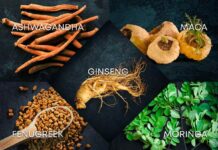winter is the best time of year to eat an abundance of produce that is high in heart-healthy nutrients and jewel tones. According to the Centres for Disease Control and Prevention, heart disease is the top cause of death in the US. Eating a plant-based diet is one strategy to reduce your risk of heart disease, according to research.
A January 2022 study that looked at 100,728 participants’ fruit and vegetable consumption in China was published in the journal Science China. The researchers found that consuming more fruits and vegetables—especially fruit—was linked to a lower risk of cardiovascular disease and an earlier death. Individuals who consumed the most fruits and vegetables also had a 13% lower risk of dying from any cause, including heart disease.
Brussels sprouts

image credit: wikipedia
Brussels sprouts are cruciferous vegetables that are rich in antioxidants, such as glucosinolate, which the body converts during digestion into isothiocyanates, which are heart-healthy compounds. According to Tampa, Florida-based cardiologist and professional chef Michael S. Fenster, MD, antioxidants may have health-promoting properties that can help reduce inflammation in the body. For instance, a May 2022 study published in Food Chemistry found that eating cruciferous vegetables high in isothiocyanates, like Brussels sprouts, is linked to a 10% lower risk of all-cause mortality.
Winter Squash Is Loaded With Antioxidants

Its characteristic hues of red, orange, and yellow are caused by antioxidants called carotenoids. This group of substances includes lutein, zeaxanthin, alpha-carotene, and beta-carotene. These substances may aid in the fight against oxidative stress, which has been linked to inflammation and a number of chronic illnesses, including cardiovascular disease, type 2 diabetes, neurodegenerative disease, certain malignancies, and age-related diseases, according to a meta-analysis published in April 2022 in the journal Frontiers in Nutrition.
Broccoli

Even in northern states, broccoli continues to grow well into the first part of autumn. This staple is a great way to get more roughage in your diet—it’s actually a type of cabbage. The U.S. Department of Agriculture (USDA) states that one cup of broccoli provides approximately 10% of your daily intake of dietary fibre and 2 grammes of protein. According to the Mayo Clinic, eating a high-fiber diet makes you feel fuller for longer, which may help prevent diabetes, heart disease, and obesity.
Sweet potatoes
Similar to squash, sweet potatoes are high in beta-carotene, which provides heart-healthy, anti-inflammatory benefits. They are also a good source of potassium, with one medium-sized sweet potato providing nearly 12 percent of your daily intake, according to the USDA.

According to a review published in August 2022 in the journal Antioxidants, these potatoes also contain sporamins, potent antioxidants that are specific to this vegetable and are being investigated for their potential benefits on colon cancer. Furthermore, a medium-sized potato with the skin contains nearly 4 g of fibre, or 16 percent of your daily requirement, according to Dr. Fenster. Bonus? Even if you have type 2 diabetes, you can still enjoy your sweets.
Also read: 5 Tips for Boosting Vitamin D During Cloudy Winter Mornings
Pomegranates
According to some research, pomegranates—which are frequently hailed as heart-healthy superfoods—possess ellagic acid, a micronutrient. According to Finckenor, “those compounds may help block the buildup of cholesterol in the arteries.” Additionally, whole pomegranates are a good source of potassium, which helps lower blood pressure. The American Heart Association (AHA) warns that pomegranate juice or any of its products may interact with some cholesterol medications. You can find out for sure from your doctor.

Although pomegranate juice is available, Finckenor suggests eating the fruit in its whole form to obtain the highest fibre content. Consider incorporating the seeds into guacamole, cereal, yoghurt, muesli or salads. Remove the top and bottom sections to access the seeds.

























